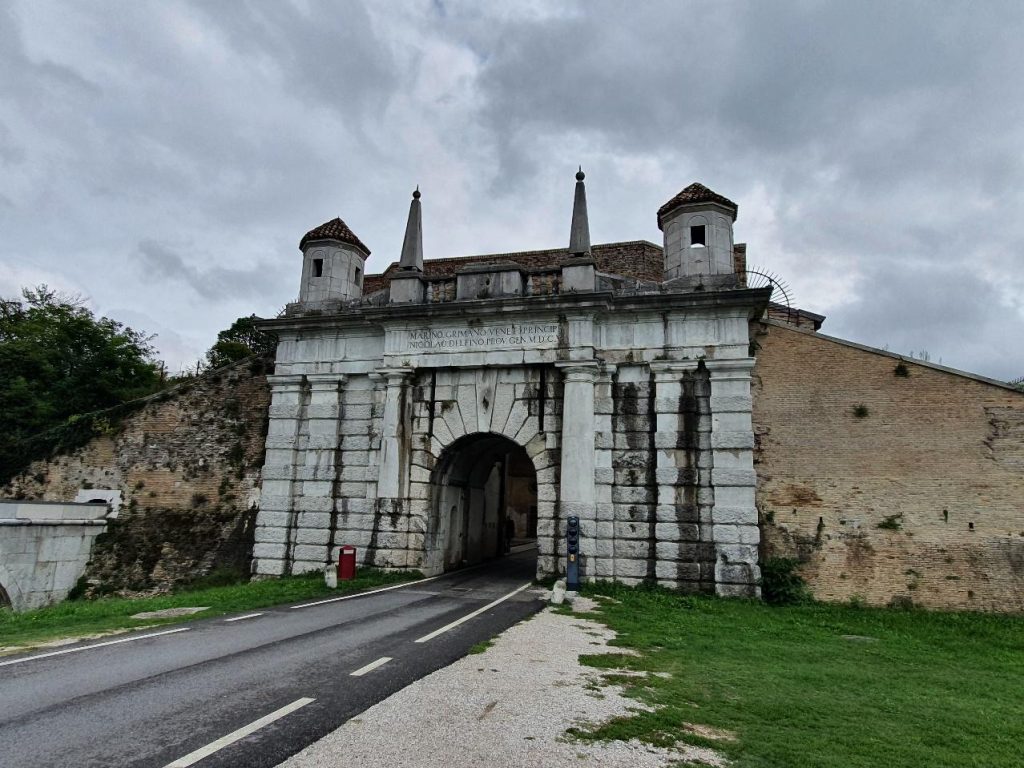The social framework of the project
Italy was a very exciting place to live in the sixteenth century. The Renaissance released all the magnificent human intellectual potential and the ideal of the Renaissance man was formed for whom there are no intellectual limitations. Members of the Renaissance elite did not shy away from getting to know the actual functioning of internal organs and the arrangement of muscles, and then used it to carve realistic, natural, often sensual human figures in stone. For the first time in history, painters mastered perspective and played with it. The real movement of the planets was no longer a secret for them, and the idea of the infinity of space redefined the position of the human species. They invented new games, competed in mathematical problems, used negative and even complex numbers and gambled out of pure curiosity to better understand the laws of probability. During the lifetime of just one generation, the culture of the ancient world was reached and finally surpassed.
But a great danger loomed over their world. The Ottoman Empire, led by Sultan Suleiman and Grand Vizier Sokolović, was then the most powerful military power in the world and it was suspected that Italy might become the next victim of its expansion. The most threatened was the Republic of Venice, some of whose overseas possessions had already fallen into Ottoman hands, and the fall of Cyprus was particularly traumatic.
In the fight for survival, a break was obtained by the victory in the Battle of Lepanto, 7 October 1571. it should have been used wisely. The authorities of the Republic decided to build a city with an impregnable fortress at a strategic place, near Trieste, on the way to Venice, officially as a defense against the Ottomans from Bosnia, and unofficially against the threatening Habsburg Empire. The city will be called Palmanova, and the implementation of the plan was entrusted to Marcantonio Barbaro, the most capable politician the Republic had at its disposal at the time.
Construction organizer – Marcantionio Barbaro
Marcantonio Barbaro was born into one of the richest and most influential families of the Venetian aristocracy at a time when the Italian Renaissance was at its height. The cultural stimuli to which he was exposed in his youth determined his view of the world throughout his life. It is known that he was an amateur sculptor, and for some time he was the rector of the University of Padua, at the time when the young professor Galileo was teaching there. However, he excelled most as a diplomat and peace negotiator after the decisive battles with the Ottomans, in which he was helped by mutual respect and personal friendship with Solomon Ashkenazi, the chief negotiator of the opposite, Turkish side.

Marcantonio Barbaro was a connoisseur and admirer of architecture. When he and his brother Daniel were building their family villa, they hired Andrea Palladio, the most influential architectural theoretician, follower of ancient art, to create the project. During the design of the villa, they themselves contributed, especially Daniel, who, among other things, was an architectural theorist himself. That house of theirs, Villa Barbaro, is today protected as a world cultural heritage. As long as Palladio was alive, Marcantonio Barbaro, using his influence, helped him get important government jobs, and when he died, he promoted Vincenzo Scamozzi as his successor, who successfully completed Palladio’s started projects.
City planning
When planning the construction of Palmanova, Marcantonio Barbaro had the basic task of creating an impregnable fortress, but, in addition, he had a secret plan. It was an opportunity for him to try, in accordance with his views on life, to realize in practice a typical Renaissance idea. Namely, he wanted to create an ideal, utopian city.
An avalanche of ideas about what an ideal society should look like was initiated by Thomas More’s “Utopia”, and soon other authors in this challenging socio-theoretical field also appeared. Most of them proclaimed the idea of equality of citizens, and the ideas of religious relativism and theocratic organization competed with each other. When the construction of Palmanova was already in full swing, Tommaso Campanella added the icing on the cake by publishing, from prison, the utopian work “The City of the Sun”, in which he presents new ideas about an ideal theocratic communist utopia in which all property is shared and in where people only work four hours a day. In his utopian city, women and children would be common, and love would be separated from sex, which would be planned at the community level with the aim of planned breeding of the highest quality human race. Intriguing ideas, right? It is no wonder that his stay in prison was extended, in all, to twenty-seven years.
In any case, there was no shortage of debates and polemics on the topic of the ideal society, and here, towards the end of the sixteenth century, Mr. Barbaro had the opportunity to try to realize the Renaissance utopian idea in practice.
Various sources speak differently about who Barbaro hired as Palmanova’s chief designer. Some point to his favorite architect Vicenza Scamoci, and others to the fortification expert Giulio Savorgnan, but by all accounts, they were both engaged, each for their own part of the work.
After detailed preparations, the foundation stone for the construction of an ideal city was ceremonially laid on October 7. 1593, on the twenty-second anniversary of the Battle of Lepanto, in order to once again emphasize the fateful importance of this project.
Defensive function
At that time, Giulio Savornjan was the world’s greatest expert in the construction of fortresses, and for the construction of Palmanova he used not only his rich experience but also the latest fortification innovations. Today it is considered that Palmanova is the best example of fortification in the Italian style, for the development of which, apart from Savornjani, many of his predecessors, including Michelangelo himself, are responsible. The basic concept of the Italian fortress was so well developed that the craftsmen of the next generation, of whom the French engineer Vauban gained the greatest fame, did not have much left to add.

There is no better example of that than Palmanova. Enthusiasts and connoisseurs of fortification buildings have the opportunity to see all important defense elements there. Palmanova has nine arrowed bastions connected by ramparts (curtains), three entrance gates, a moat with water and a second circle of ramparts with bastions, ravelins, falsabrages and other elements whose names today only experts know. In the central square of Palmanova, there is an outdoor exhibition showing the engineering techniques of building such fortresses, described by one of Savorniano’s collaborators, Bonaiuto Lorini, in his book Delle fortificationi. Also, in one of his works, the construction of Palmanova was described by the famous Galileo.

The fortress was never conquered militarily, although it changed owners several times as a result of peace negotiations. At the beginning of the nineteenth century, it was in the hands of Napoleon’s soldiers who gave it a final look by adding some more defensive elements.
An ideal city
Giulio Savornjan did his part of the job perfectly, using already known knowledge, but Vicenzo Scamozzi found himself facing the most difficult task that can be set before an architect. His task was to create an ideal city within the walls where life should be perfect. He had to start somewhere, but he had before him only the casual fancies of men of the pen, without any practical experience and without any concrete previous attempt.
In fact, the most concrete was the Florentine-Milan architect Filarete from the fifteenth century. In one of his theoretical works, he described and illustrated his idea of an ideal city with several drawings.

His ideal city, which he called Sforzida in the book, was imagined as an octagonal star inscribed in a circle, with eight towers and eight gates. The layout of the streets in the city would be radial, and every other street would actually be a canal, due to the water transport of goods, and there would also be a connection to the river outside the city. Although Filaret’s understanding of the defensive function was quickly surpassed, and he himself was somewhat influenced by astrology and occult teachings, his work aroused some interest and professional reaction, and in response to that challenge, some other Italian Renaissance men put their ideas on paper. engineers, among them Leonardo da Vinci.
Perhaps that inspired Skamoci too, so he also decided on radial and concentric polygonal streets in the city with houses on approximately equal plots, which should be in accordance with the principles of equality of citizens. In the center of the city there is a large square with a church and public buildings. The church, the Duomo, has a very small bell tower so that the enemy outside the walls would not see it and thus make it difficult for him to orient himself. The square is decorated with sculptures of former mayors, called provveditori, at the beginning of each of the radial streets, but this custom was abandoned at the end of the seventeenth century, and even their names were erased, perhaps in the name of the proclaimed equality of citizens.

Very soon after the start of construction, the main political organizer Markantonio Barbaro and the main fortification engineer Giulio Savornjan died, so only Skamozzi remained from the original initiators of the realization of the ideal city project. It was an impossible mission.
Despite the great effort, the city did not meet expectations. Nobody wanted to live in it. Something important was missing, but it was not easy to define what it was. It is recorded that the authorities of the Republic made several attempts to motivate people to settle there. They gave free plots and building materials, they even released prisoners if they agreed to settle there, so that didn’t help much either. Four centuries later, the situation is hardly better. Of course, the city is not deserted, people live in it, but the city has neither the charm nor the liveliness of other Italian cities.

Palmanova is the first, most comprehensive and most ambitious attempt to create an ideal city. Later projects of a similar kind, sometimes initiated from humanist circles and sometimes from totalitarian regimes, were more moderate in their goals and more aligned with real needs.
As part of a wider program, Palmanova is protected by UNESCO as a world cultural heritage.
Darko Veselinović, May 2023.

